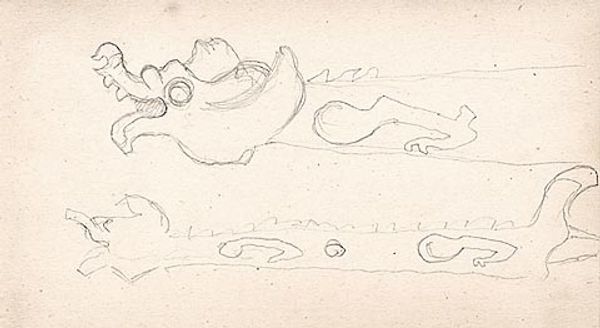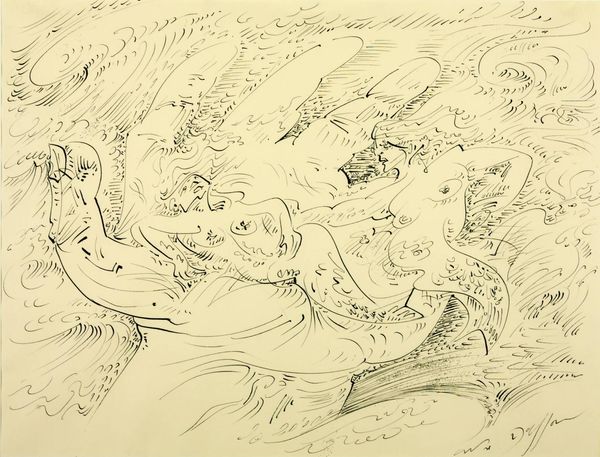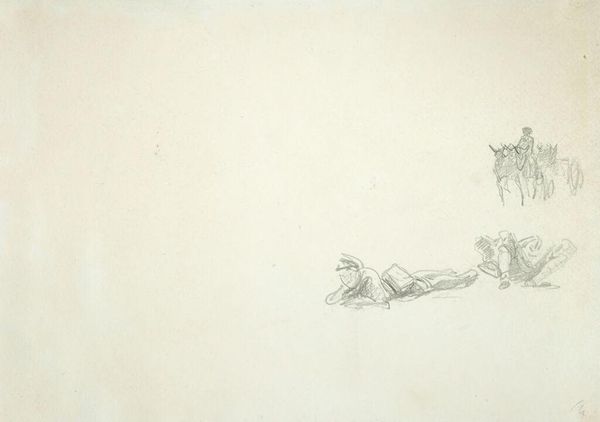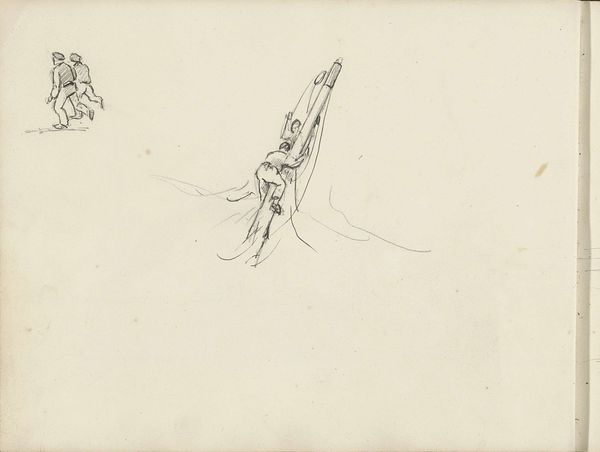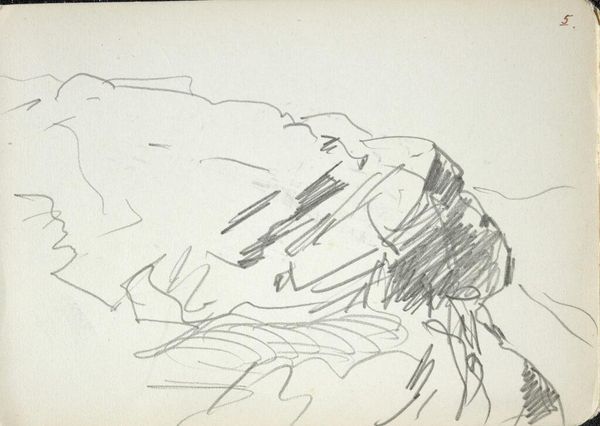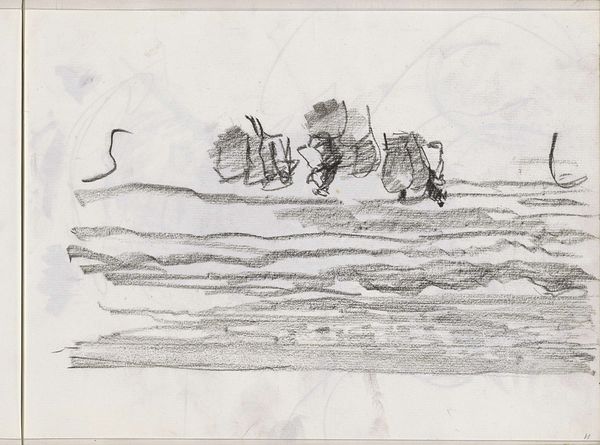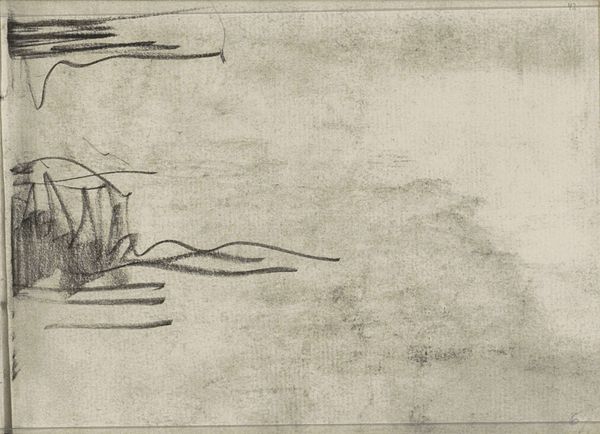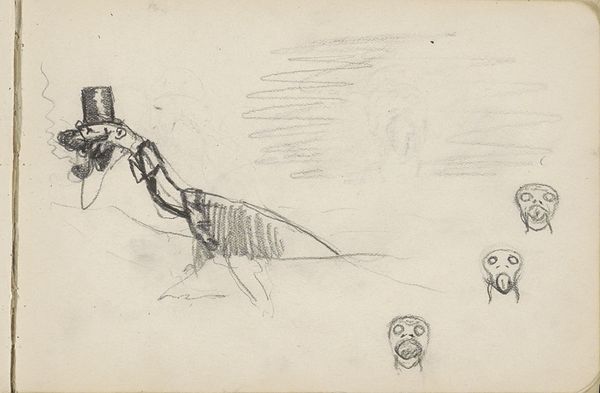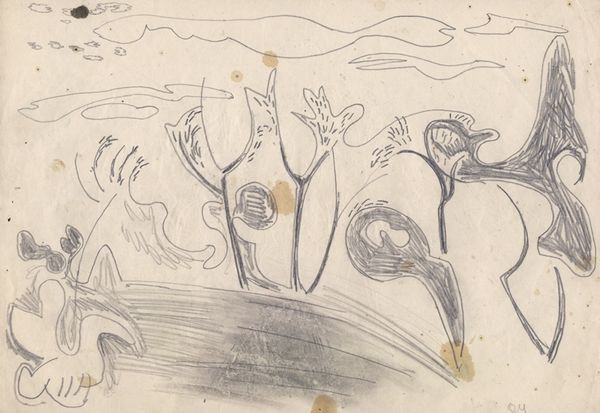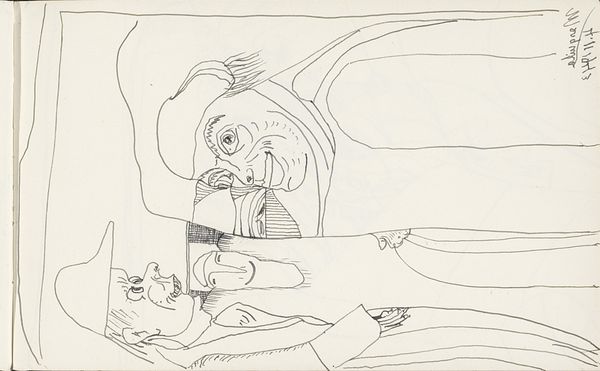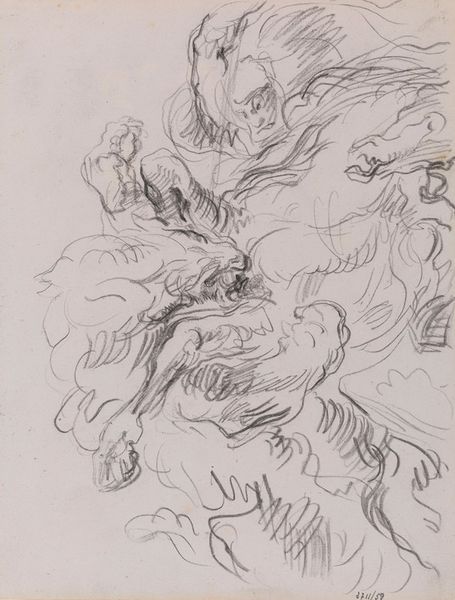
Copyright: Public domain
Curator: We're looking at "Sea," a pencil drawing created in 1919 by Nicholas Roerich. Editor: Instantly, I feel a quiet restlessness. The barely-there horizon above the frothy waves creates this intimate, almost claustrophobic feel, like nature is pressing in. Curator: Right, Roerich worked primarily as a painter but this drawing is interesting because you see the bare bones of wave forms built only of lines and the artist’s skill in modulating pressure. He used pencils with various hardnesses, from H to B, allowing the lines to convey shadows without the use of much smudging. Editor: It makes me think about Roerich's process—him wrestling with capturing the energy of water, the almost frantic energy with his pencil. It's a dance between control and letting the sea "be." Curator: And during this period, Roerich, as well as many other artists in Europe, were seeking new symbolic forms of representation. He made drawings to explore simple line as form during a very stressful period during and following the First World War. We can appreciate the labor intensity by acknowledging these were very portable sketches to create in field and then they later transferred into painting. Editor: Yes! It's a preparatory study but holds such depth and emotion in its own right. I also think that these drawings were studies in human spirit for the artist; an interesting exercise in material reduction and seeing what he was able to express. Curator: Agreed. The sea's symbolism would be tied with both the conscious and unconscious mind by psychologists exploring archetypes at the time. So in considering that we could see that this drawing, with such sparse materials and artistic treatment, is able to do that on a visual level for viewers as well. Editor: Seeing Roerich’s initial gestures provides an additional portal to how an artist’s vision took shape during this unique historical moment. It's powerful how something so "unfinished" can feel so complete, wouldn't you say? Curator: Absolutely. Thinking about artistic creation as a form of social making as well helps one have a greater respect for an artist's entire process in both sketch or formal rendition.
Comments
No comments
Be the first to comment and join the conversation on the ultimate creative platform.
